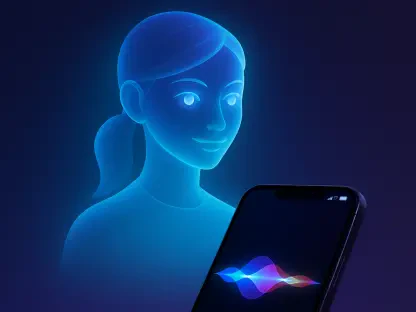Imagine a world where a simple sip from your morning coffee cup could reveal critical insights about your personal health, without the need for needles, lab visits, or expensive equipment, and engineers at the University of California San Diego (UC San Diego) have made this a reality. They have developed a groundbreaking sweat-powered electronic sticker that transforms everyday drinking cups into smart health sensors. This innovative device, adhered to the outside of a cup, uses sweat from a user’s fingertips to monitor vitamin C levels in real time, offering a non-invasive and affordable alternative to traditional testing methods. By harnessing the natural sweat produced by the body, this technology operates without batteries or external power sources, aligning with the emerging trend of “unawareables”—devices so seamlessly integrated into daily life that their presence goes unnoticed. This advancement promises to revolutionize how individuals track wellness, making health data accessible with minimal effort and cost.
Revolutionizing Health Monitoring with Everyday Objects
A significant challenge in global health is the inaccessibility of frequent testing for vital nutrients like vitamin C, especially in underserved regions where malnutrition and micronutrient deficiencies are rampant. Traditional testing methods often cost around $50 per test in the U.S. and require specialized equipment, rendering them impractical for regular use. The sweat-powered sticker developed by UC San Diego engineers offers a compelling solution by embedding health monitoring into common objects like cups or bottles. Built on a flexible polymer sheet, the sticker incorporates a porous hydrogel pad to collect sweat, a biofuel cell to generate electricity from sweat chemicals, and a custom circuit board for analyzing vitamin C levels. This data is then wirelessly transmitted via Bluetooth to a nearby laptop, ensuring users can access real-time results without altering their daily routines. The affordability of this technology, potentially costing just a few cents per unit, positions it as a game-changer for widespread adoption across diverse populations.
Beyond cost and convenience, the true innovation lies in the sticker’s ability to operate continuously without user exertion. Powered by the abundant sweat glands in fingertips, the device sustains itself for extended periods—demonstrated by tests where it functioned for over two hours after participants consumed vitamin C supplements or orange juice. This battery-free design eliminates the need for maintenance or replacements, enhancing its practicality for everyday use. Researchers at UC San Diego, including co-senior authors Patrick Mercier and Joseph Wang from the Jacobs School of Engineering, emphasize that such technology shifts the paradigm of health monitoring from sporadic doctor visits to constant, effortless data collection. By integrating sensors into objects individuals already interact with, the sticker ensures that health insights are captured naturally during routine activities, paving the way for a deeper understanding of personal wellness without the burden of invasive procedures or complex setups.
Bridging Technology and Accessibility for Global Impact
The collaborative effort behind this sweat-powered sticker showcases the power of interdisciplinary expertise in tackling pressing health challenges. Combining Mercier’s proficiency in ultra-low power, battery-free wireless systems with Wang’s pioneering work in wearable biochemical sensors, the project represents a fusion of cutting-edge engineering and practical application. Their shared vision is to redefine wearable technology by moving sensors off the body and onto everyday items, creating a seamless bridge between technology and user experience. The sticker’s successful testing, which accurately tracked vitamin C levels in real time, serves as a proof of concept for broader applications. Plans are already underway to expand its capabilities to measure other nutrients and biochemicals, ensuring that future iterations can provide a more comprehensive health profile with the same ease and affordability that define the current design.
Looking ahead, the potential for scalability and integration with personal devices like smartphones or smartwatches adds another layer of accessibility to this technology. Imagine a scenario where holding a water bottle not only quenches thirst but also delivers critical health data directly to a mobile app, empowering users to make informed decisions about their diet or lifestyle. This aligns with the broader trend in health tech toward non-invasive, user-friendly solutions that democratize access to personal wellness information. The sticker’s low production cost further amplifies its impact, particularly in low-resource areas where expensive medical tests are often out of reach. By addressing both technical and societal barriers, this innovation stands to improve health outcomes on a global scale, offering a glimpse into a future where monitoring vital signs is as simple as grasping a cup. The ongoing research aims to refine these integrations, ensuring that the technology evolves to meet diverse needs across different demographics.
Pioneering a Future of Unobtrusive Wellness Tracking
Reflecting on the journey of this sweat-powered sticker, it’s evident that the collaboration at UC San Diego marked a pivotal moment in wearable health technology. The meticulous design, from the biofuel cell to the wireless data transmission, showcases how far engineering has come in blending functionality with simplicity. Tests conducted with participants consuming vitamin C-rich foods or supplements proved the device’s reliability, sustaining itself on natural sweat for hours without faltering. This achievement highlights the potential for unobtrusive health tools to transform daily interactions into opportunities for wellness insights, a concept that was once thought to be far-fetched but has become tangible through dedicated innovation.
As this technology moves forward, the focus should shift to actionable steps like accelerating mass production to ensure affordability remains a cornerstone of its appeal. Partnerships with health organizations could facilitate distribution to regions most in need, while further research into measuring additional biomarkers will enhance its utility. Integrating readings with personal devices for instant feedback is another critical area for development, ensuring users can respond promptly to their health data. This UC San Diego breakthrough lays the foundation for a future where health monitoring is no longer a chore but a natural extension of everyday life, inviting a reevaluation of how technology can serve humanity in the most seamless ways possible.









